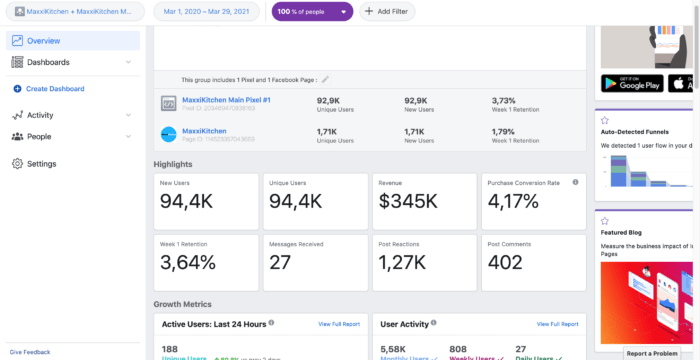
Hey, this is not an article to show off, but it’s an article to get something straight.
When you hear “A digital marketer,” what comes to mind?
To me, a digital marketer is the following:
You’re going to sell a product, run ads, and plaster your branding all over your content. It’s just so much easier if you can create a website that matches your vision for the product instead of relying on developers. Explaining everything, waiting weeks, paying them, and dealing with endless back-and-forth—that’s a waste of time and money. Just build it yourself. Even if you’re a complete beginner, it’ll take two weeks max to get a basic site up and running.
I use platforms like WordPress, Shopify, and BigCommerce. They’re affordable, ready to go, and allow you to hit the market fast. Why spend thousands on a custom site only to find out your product is trash and nobody wants it? (By the way, you can sell almost anything with the right approach.)
That said, there are cases where a custom website makes sense. If you have the knowledge and time, you can avoid platform fees, skip reliance on apps, and implement custom solutions like advanced Google Tag Manager setups. But let me be clear: unless you’re already pulling $50K–$100K in sales, you shouldn’t worry about this. Focus on what works. Even billion-dollar brands like Kylie Jenner’s are hosted on Shopify for a reason. Why? Because it’s reliable, scalable, and loaded with features you’d spend hundreds of thousands replicating on your own.
Your website is your kiosk in the digital bazaar. A great digital marketer knows how to make that kiosk stand out. High-quality wood, beautiful curtains, bold signs—these are the details that draw people in and spark curiosity. That’s what your website needs to do.
A marketer needs to know how to write copy and create visuals that resonate. Branding doesn’t mean spending $2K on a logo or hiring a “font master” to pick two fonts. That’s fluff. Nike’s swoosh logo cost $35. Nobody cares about the swoosh itself; it’s the meaning and reputation built around it that matter.
And let’s not ignore the reality of overpriced services. In 2021, some guy offered to rewrite a single product page for CHF 500, claiming he was “so good” at copywriting it would transform my business. After I rejected his offer, he got salty and started pointing out random mistakes in my LinkedIn profile. Needless to say, I didn’t lose any sleep over it. With tools like ChatGPT, Google Gemini, and Microsoft Copilot today, you don’t need overpriced services for a basic copy. The strategy, the message, and the overall branding are what truly matters—not inflated claims of expertise.

Branding starts with a clear message and creative communication. It's not about overpriced gimmicks—it’s about strategy and execution. See some cool brands I built at Katsman.ch.
You don’t need a professional studio or expensive equipment. Honestly, I don’t even shoot content myself that much. I take advantage of free, unlicensed videos from the internet that fit my needs. But if I do shoot, I use my iPhone 15, and you wouldn’t be able to tell the difference between my videos and ones shot on a $15K camera—especially on TikTok or Instagram, where compression levels the playing field.

User-generated content is powerful because it feels authentic, relatable, and real—perfect for today's social platforms. (You won’t see a TikTok of me dancing... but never say never!)
Some people think you need a rented studio or perfect lighting, but you don’t. AI tools can replace backgrounds, and apps like Photoshop and Lightroom handle the rest. Worst case? Hire someone on Fiverr for $15 to polish your content. And don’t underestimate User-Generated Content (UGC). It’s authentic, relatable, and works wonders on social platforms. Just find someone who fits your brand, and let them create. It doesn’t have to be an influencer or a superstar—the beauty of UGC is that it feels real and approachable. Just look at all these people willing to film UGC for your brand for as low as $5 to $50—it’s affordable, impactful, and an excellent way to connect with your audience.
Whether it’s Facebook, Google, or TikTok, the process is the same: set up campaigns, define targeting, and populate ads. Here’s the secret: ignore platform suggestions. They’ll tell you things like, “Your chosen budget is not likely to deliver conversions,” or “Try our new automatic optimization tool,” but that’s not right. Those tips are designed to burn your budget faster, not get better results. (Psst... don’t tell Meta I told you this.)
Some marketing “teachers” or “gurus” will tell you that you need to build brand awareness first, then focus on engagement, and only later target conversions. But it’s not true. I was recently doing a course in digital marketing—mainly to get a certification—and the teacher instructing me and 20 other students knew absolutely nothing about Facebook ads. Why would she? She had never spent a single dime on paid advertising.
Academics is cool, but I like real-world applications and practice. We can all talk about this and that in theory, but can you do it? I, on the other hand, have spent $150K—not on some company’s budget where I’d have zero personal liability, but on my own real-life money.
When I was 22, I was running my business on the margin, using borrowed funding to test, scale, and optimize campaigns. While that might sound scary to some, it wasn’t to me—I knew exactly what I was doing. It’s the difference between an officer from a military academy who’s never seen combat and a true veteran who’s spent months in the trenches.
Pro tip: The algorithms already segment users by behaviour. They will give you exactly what you ask for. Run ads optimized for sales, and they’ll target people who actually buy online. Run traffic ads, and you’ll get people who click but never convert. Trust the algorithm, but don’t overthink it.
The best part is that you don’t have to take my word for it—it’s been documented in my LinkedIn post all the way back in 2020. In just two months, from March 1 to June 30, I generated $150K in sales using an aggressive ad strategy. After that, I scaled back and let the campaigns run almost automatically, bringing the total to $345K over the next 12 months, as you can see below.

This Facebook Analytics dashboard documents the $345K revenue generated from March 2020 to March 2021, with a 4.17% purchase conversion rate. The aggressive strategy in the first two months brought in $150K, while the remaining $195K came from campaigns running in a more automated and low-maintenance mode over the next 12 months—all while I was also creating websites for clients and running ads for other businesses.
Tracking is the backbone of digital marketing. Without it, you’re flying blind. Tools like Facebook Pixel and LinkedIn Insight Tag let you track users and their actions on your website, which is the only way to optimize ad performance. Google Analytics provides a broader view, showing overall website analytics, visitor behaviour, interests, and more.
You can often find these tools available as built-in partner integrations in platforms like WordPress and Shopify. However I wanted more control, the ability to see granular data, and the flexibility to adapt tracking to my needs. That’s why I learned the basics of JavaScript, and before long, I was using Google Tag Manager to build fully custom tracking solutions for myself and my clients. No more relying on anyone else.

This is an example of a Google Analytics dashboard from one of the eCommerce stores I worked with. We can see which interests are the most prevalent in our audiences and use this data to enhance targeting in paid channels. You can read more about how I leverage data to optimize ROI at Katsman.ch
For example, was it moms aged 20–40 from New York who converted the most? Or construction workers aged 50+? This data guides your decisions. And analyzing it isn’t complicated. If one ad gets a 5% click-through rate and another gets 2.5%, you don’t need a degree in data science to know which one’s better. You double down on what works.
That’s why testing is critical—you need benchmarks to optimize against. You can see all the stats about your website, like users by location, time, gender, etc. And you can collect data to optimize ads and retarget people throughout the internet. This data helps you figure out what’s working, which channels to scale, and which ones to cut. If you’re not doing this, how do you know what’s driving your results? If you are not doing this, then how do you know what is causing your results? How do you know which channels to cut and which ones to scale?

Which ad set do you think performed the best? It’s the one with a 4.42% CTR—meaning 4.42% of people who had the ad appear on their screens clicked on it—and it also had the lowest cost per click at just €1.25. Analyzing this kind of data helps me refine ad performance and allocate a budget where it drives the best results.
Some people overcomplicate data analysis. But honestly, if you can compare the price of two juice bottles at the store and pick the cheaper one, congratulations—you understand basic data analysis. The same principle applies to marketing: it’s not about overthinking, it’s about looking at the numbers and making practical decisions. Compare results, understand what works, and take action. Theory is fine, but in the real world, execution is everything. The same principle applies to ads: compare results, see what works, and iterate.
Maybe I have high standards. But to me, being a digital marketer isn’t just about running a few ads or posting on Instagram—it’s about being a strategist, a creator, and a problem-solver. It’s about delivering real results, not fluff. So why should you care about what I have to say? Because I’ve lived it. I don’t rely on a team of ‘specialists’—I do the work of an entire marketing team alone and generate significant revenue in the process.
I’ve spent the last six years immersed in digital marketing—not studying it in a classroom, but learning it in the trenches through trial and error. My educational background is actually in oil and gas trading, not marketing. But my success in digital marketing comes from real-world implementation and raw, firsthand experience. I’ve tested ideas, made mistakes, and found what works. This isn’t theory—it’s the reality of what it takes to succeed. And that’s what sets me apart from someone posting twice a week on Instagram and calling themselves a marketer.
By the same author:
How AI in eCommerce is Leveling the Playing Field
From Zero to $264,000: Lessons from Building a Successful eCommerce Brand
Images:
eCommerce and digital marketing specialist with hands-on experience building brands from the ground up.